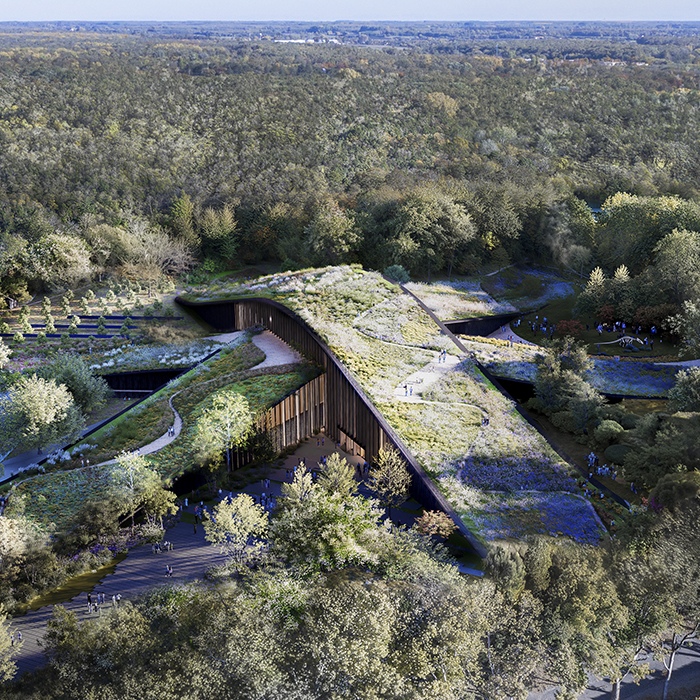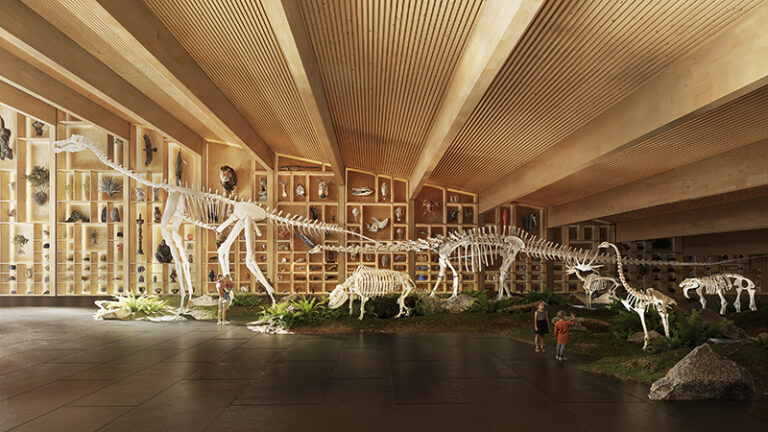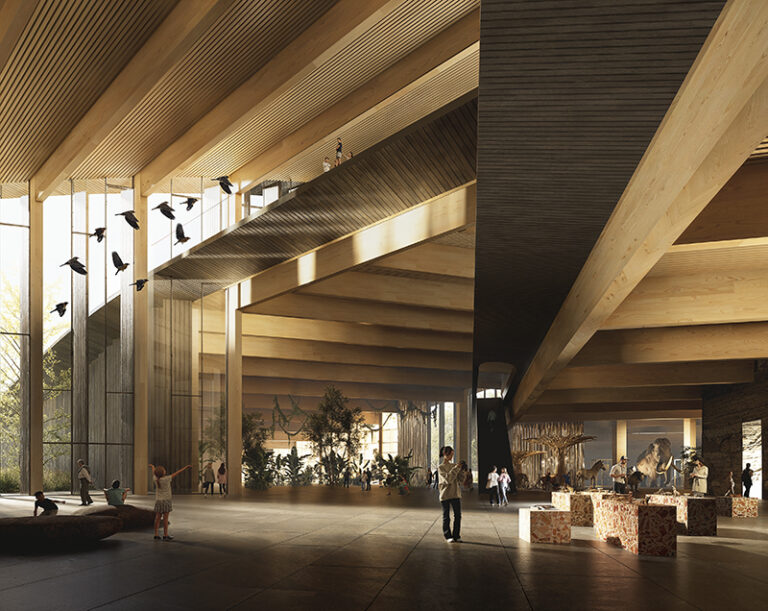
Designing with Nature: BIG’s Vision for the Hungarian Natural History Museum
In a bold reimagining of what a natural history museum can become, the architecture firm BIG, led by Bjarke Ingels, has won the international competition to design Hungary’s new Natural History Museum in Debrecen. Set to become a landmark in the country’s second largest city, the project reflects a fundamental shift in museum design where the building itself becomes a living extension of the natural world it celebrates.

Organic Integration with the Landscape
Located within Debrecen’s historic Great Forest, known as Nagyerdő, the 23,000 square meter museum does more than occupy space. It reshapes the landscape. The winning proposal features three gently rising ribbons of landscaped roofs that appear to emerge directly from the forest floor. The structure honors its environment by echoing its patterns and topography while creating new ways for people to experience it.
“Our design is conceived as an intersection of paths and lineages,” says Bjarke Ingels, Founder and Creative Director of BIG. “These overlapping ribbons form niches and habitats, galleries and gathering spaces. They blur the line between inside and outside, the personal and the monumental.”

Architecture that Becomes Terrain
Ingels describes the concept as a manmade hill rising from a forest clearing. It is at once geometrically clear and softly organic. This sculptural form provides an appropriate setting for exhibits that explore and celebrate the natural world. The sloping roof will be open to visitors, offering panoramic views of Debrecen and inviting a physical and emotional connection with the museum.

A Building Rooted in Ecology
The museum’s ecological vision is reflected in both its design and its materials. It will be built from mass timber and clad in locally sourced charred wood. The structure seems to rise from the forest itself, merging with the natural landscape rather than imposing on it. This approach echoes a broader architectural movement that emphasizes sustainability and deep integration with the natural environment.
Restoring the Land
BIG partner Hanna Johansson notes that the design goes beyond preserving nature. It aims to restore and improve it. “Rather than simply conserving the site, the building restores and enhances it,” she explains. “It regenerates biodiversity while adapting quietly to the surrounding ecosystem.”
The museum will also rely on green energy systems. These include geothermal loops and photovoltaic panels that take advantage of the ground’s thermal mass to maintain a stable indoor climate throughout the year.

A National Investment in Culture
This new institution is part of a larger cultural vision championed by the Hungarian government, which aims to establish Debrecen as a leading center for education and culture by the year 2030. Commissioned by the Museum and the Ministry of Culture and Innovation, the project will replace the existing Natural History Museum in Budapest. It will include permanent and temporary exhibition halls, research and educational spaces, visitor amenities, and administrative facilities.
Designed Through Collaboration
The project brings together a network of international and local expertise. BIG is working alongside Hungarian architecture firm Vikár és Lukács Építés Stúdió, the design consultancy Museum Studio, and the global engineering company TYPSA. Together they are shaping a museum that redefines the relationship between structure and environment.

A Personal Vision
For Ingels, the project holds personal meaning. “I named my oldest son Darwin,” he shares. “To be entrusted with the authorship of the Hungarian Natural History Museum in the Great Forest of Debrecen is not only an honor. It is a deeply meaningful opportunity to contribute to a place where knowledge and nature will come together for generations.”
Looking Ahead
When completed, the museum will stand as more than a place to store natural specimens. It will be a symbol of harmony between creativity and ecology. It will invite visitors to consider their place in nature and to engage with architecture that inspires awe and reflection through its quiet unity with the forest around it.
